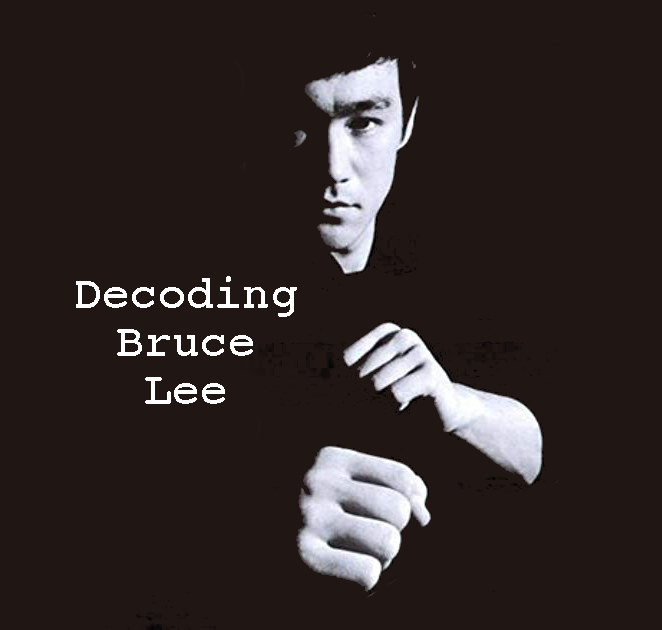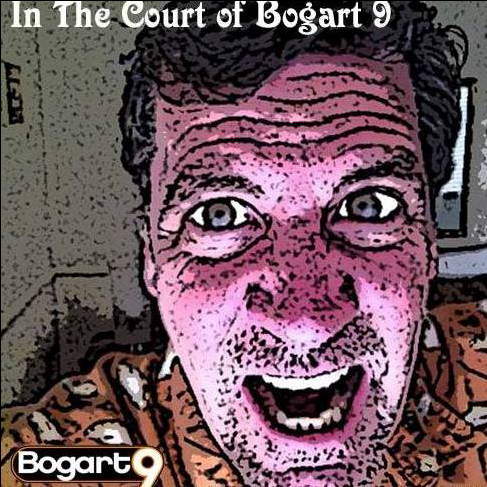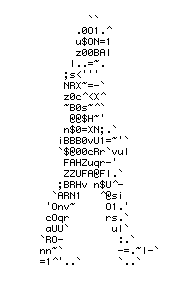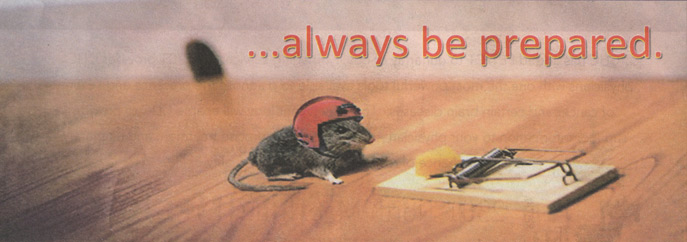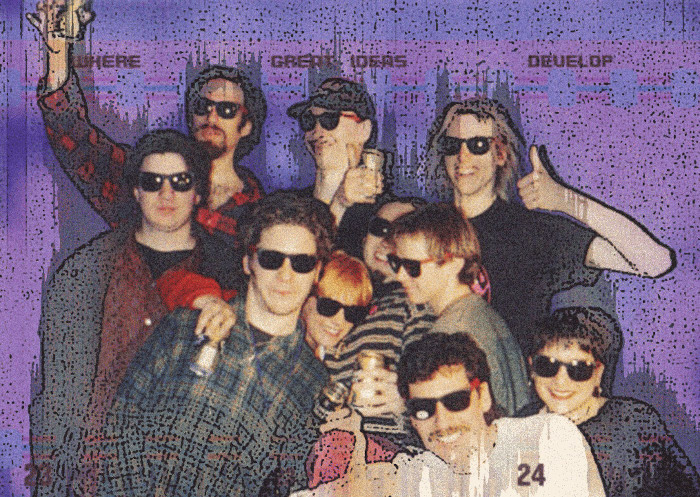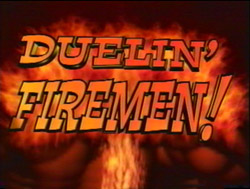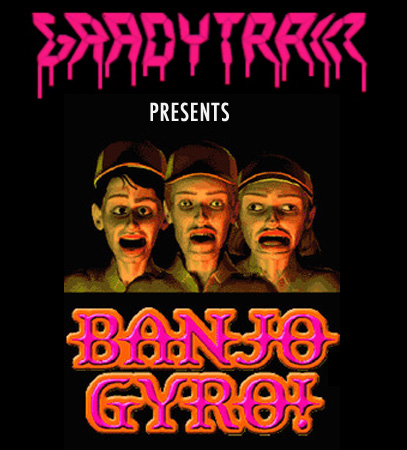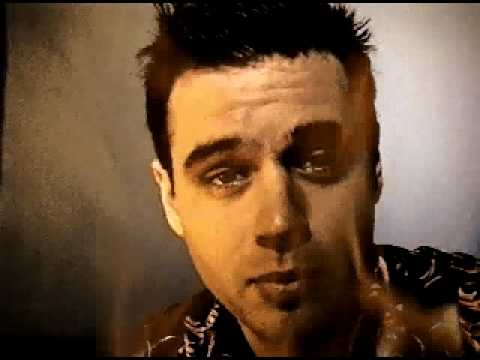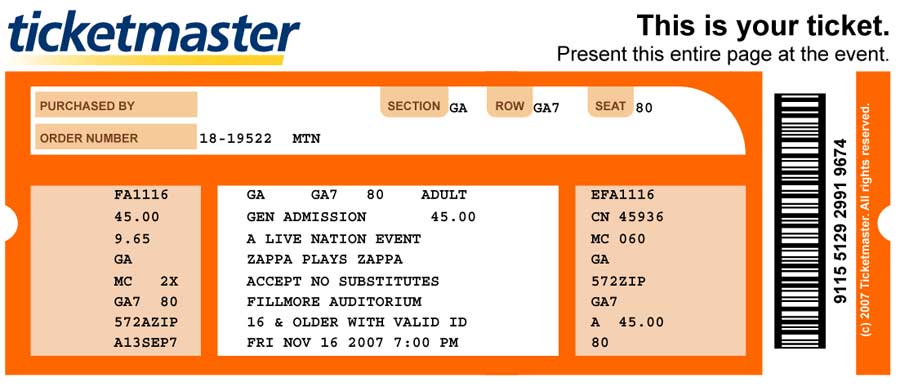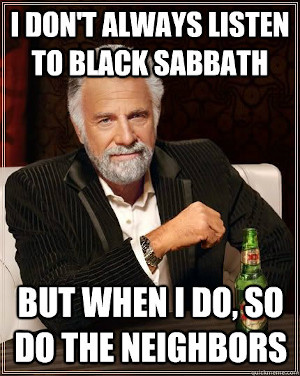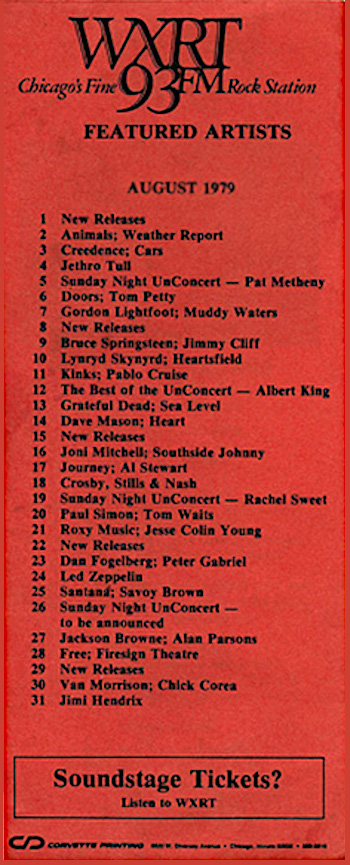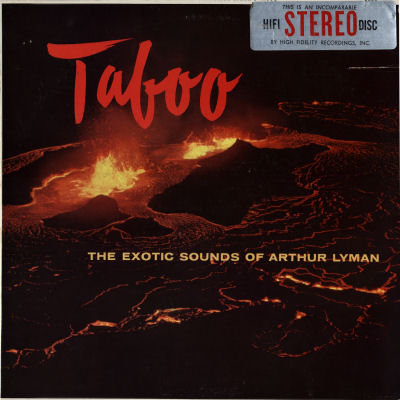 |

Were you stationed on Ludendorff Kaserne in Kornwestheim Stuttgart Germany? |
 Visit our store Krave Kreations Unlimited LLC Krave Kreations Unlimited Coming Soon - Our new Flagship store! Check back next month. |
|||||||||||||
| My
name is Chris
Carter I am a author artist adventurer puppet maker animator musician magician anthropologist geospatial imagery intelligence analyst pixel wrangler powerpoint jedi sarcastic jaded wordsmith master procrastinator The newest project in the Laboratory is part of the oldest project. Back in 1983 I created "American Health Defense." It was supposed to be a new martial art based on Jeet Kune Do. At some point the name changed to TOTAL HEALTH DEFENSE because it was never really just an American thing. After all who would base their own health on politics or a corporation or what some guy on TV said, that makes no sense. Now that we're in the cyber age physically fighting people to solve your problems is so last century. If Bruce Lee were here today he would be very evolved into new algorithms. He was ahead of his time and he still is. This is why we have to Decode Bruce Lee. Chris Carter is the Author of "How To" Predict The Future" and also known for his famous virtual Duet with Fiona Apple, has anyone told Fiona yet? oh Nevermind, Chris met Liz Phair and a slew of famous 90's rock stars when he worked as Jerry's sidekick at the JBTV Music Video Show in Chicago. Here is UK band XTC showcasing some animations from the JBTV Music Video Show XTC - All Along The Watchtower Helgato Negro. This guy is amazing, he's like a massage for your brain. Check out his "Hometown Dreams" Another Helgato Negro mind massage "Ghost Dance" Dweezil Zappa narrating his Guitar Collection. Each one, its history and specifications. The Collection: Dweezil Zappa Here's MMB the Mike Michalak Band doing, "American Soldier." This song had no video so instead of using typical soldier imagery I used Signs, Stencils and artifacts from a Combat Base in Afghanistan to demonstrate what you would see if you went there on the battlefield on any given day. MMB American Soldier |
Its
so funny this sole web page is the only living code, Fangboy
Village, thats left of, survives from, my very first days on
the internet. I was in the great AOL train robbery of 1996.
Remember when the "www" internet first came out AOL charged
you per hour. Can you imagine? I thought it was madness. I was there in the beginning of the "www" internet. 1995. AOL was the bomb. But they charged you per minute and per hour to use the internet, I thought that's crazy talk. In December 1996 they changed it to a flat monthly rate. I signed up. It's been called, "Bloody Sunday." AOL almost went under. I signed up like one more of a million buffoons. Of course the AOL network promptly imploded. They were overwhelmed. It was a gold rush. A Tsunami of requests. They couldn't process everyone and they couldn't process refunds they couldn't even answer the phone for info. Nothing, no any anything. I quickly gave up ever getting my 20 bux back ($19.95) They still owe me today you AOL cowards. The January 1997 CNN Headline read, "AOL offers refunds to appease angry customers" I was headed to Hollywood by then. I wrote off AOL it was Roadtrip time. It was head to Hollywood to get ripped off by the Califonia DMV. About 4 years after I left California the DMV lost a Class Action Case for multiple financial shenanigans. They too still owe me CA DMV you cowards.
History of the 563rd Combat Engineer Battalion. The 563rd EN BN was located in Ludendorff Kaserne, Kornwesthiem Stuttgart Germany 1980-1981. 563rd HHC the 503rd Engineer Company the 38th Engineer Company  Ted call me.
Ted call me. |
||||||||||||||
| Visit
the YogaPets page and see how your Pet can be Enlightened
YOGA PETS  Where all your animals are SmartPets 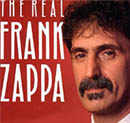
|
A
few of the Ye Ole Villagers and wayward citizens of the
mind.
|
||||||||||||||
| The "Mother
of All" Frank Zappa Sites Zappa Donlope Zappa Wiki Jawaka has 5,153 articles about the life, times and music of Frank Zappa. Here's the Official Zappa site Zappa.com Zappa childhood friend Captain Beefheart www.RALF.com Cal Schenkal The artist for Zappa's best album covers. Brillant. Calvin Schenkal and R.Crumb are the two best artists in the world. Bunyons mate! -------------------------------------------------------------- Greg Lake- Yes it's him THAT Greg Lake from ELP Kate Bush She has nice website that girl can sing. Angelique Kidjo World Music Queen www.kidjo.com One of my favorite bands of the 90's are so underrated its criminal. From Athens Georgia "The Judybats." They're album NATIVE SON is a masterpiece, really. Every song is super tight. Check it out- 01/) DAYLIGHT 02/) NATIVE SON Album Title Track 03/) INCOGNITO this is a Fan Made video, great song! 04/) CONVALESCING IN SPAIN perhaps Alicanti ? 05/) DON'T DROP THE BABY 06/) SHE LIVES (IN A TIME OF HER OWN) 07/) COUNTING SHEEP I'm making the video for this one Alice Cooper talking about getting sober. Amazing. New Interview Alice Cooper With Dan Rather Joe Walsh advising Sammy Hagar how to get sober. Amazing. Sammy Hagar asking Joe Walsh HOW do you do it! Billy Connolly talking to Conan about getting sober. Amazing. Billy Connolly Explaining to Conan about Getting sober Evel Knievel explaining what alcohol does to your body Your Body Is Like A Engine says Evel Knievel What, Mental Health? Bob Newhart showing everybody how it all works. This is not a joke not a parody this is 100% reality out there The question is were humans always like this? Or is it only because of our new life expectancy? Only in the last 150 years? Bob Newhart STOP IT Therapy |
THE SECRET TO
LIVING IN AMERICA - Freedom is not free. Buy Your Freedom
in 3 Step$. How to get rich? Stop trying. Stop buying. Stop
lying to your Self. Stop living beyond your means just because
you think you never can. Stop the bleeding. The more you live
beyond your means the more this is gonna cost you. You gotta
either make more or spend less. Which is easier? 1.) Stop EVERYTHING and get out of debt. 2.) Live Within your means. 3.) Now cut that in half. Implement the "Life Algorithm" here's how it goes: Don't Sink The Ship. You can do anything you want but you can't sink the ship. In school you are given no Fiscal Literacy. You are setup to be a financial slave (that's so you can support the rest of us to live in freedom). That's how the economy, the medical system and the food chain is setup. Not for you. All these "tax incentives" setup by the retirement "industry" mainly benefit people who don't need it, not you. It's a closed bubble. George Carlin said, "The table is tilted, folks, the game is rigged.” Carlin added, “It’s a big club and you ain’t in it.” My theory is things are evolving faster than humankind can keep up with. That's why there's this feeling today the country is going backwards when really it's just not keeping up with the new version of Forwards. If everyone ate correctly starting tomorrow morning the economy would collapse. The good news is you don't have to outrun that Grizzly Bear chasing you. You just need to outrun the slowest guy in the group. The secret is to be poor but live rich. If you have no debts it's all pretty simple. Everything about America is to sucker you into debts so you can support the fat cats. Stop playing their game! Just Stop It- The Bob Newhart Stop It Therapy Ten things designed to rip you off - STOP IT ; Prescription Glasses, Anything For A Wedding, Auto Sales, Divorces and Dental Insurance, Clothing, Crypto, College Textbooks, Cars That Run By Computers, Funerals, Bottled Water, Starbucks, Anything At Theme Parks, Strip Clubs, Casinos, 1/3 of the Internet, 1/3 the stuff at the grocery store. Tao Te Ching – Verse 33 If you realize that you have enough, you are truly rich. The Fixx - How Much Is Enough? ----------------------------------------------------- TWO WEBSITES FOR ADVICE If you live in America and you have no debts -You Are Rich. By analyzing the tax code and looking at personal finance through the lens of financial independence, you can develop your own advanced strategies, spreadsheets and freedom. All this talk about retiring is nonsense. Retirement means you’re beginning to end. You should never retire. What you should do is run your business on your terms. Business means work on what you like doing. Take time off any time. Work from anywhere. If you own a Home that IS a business. Why do you live like a financial slave and let politicians get you to vote against your own interests? You never put diesel in your gas engine so what is there to not understand? Stop It. Mr. Money Mustache The whole country seems to be displaying the same odd behavior: living ridiculously, beyond their means while thinking they are completely normal, and then being baffled when they have no money left over to buy their own freedom. All while being so busy that they didn’t even have time to investigate the science behind this behavior. This freedom is achieved not through luck or amazing skill, but simply by living a lifestyle about 50% less expensive. The economy is made for to you to think you can "live the dream" even though your broke. Stop it. Mad Fientist -------------------------------------------------------- At the grocery store you buy 9 items and come out with 12 bags. Plastic bags. Plastic is everywhere and nobody cares. It's been this way since the beginning of time. Only a small group of people are aware. Here is Professor John Boik on the bigger picture with his "Systems Approach" to us humans living long eating wrong, clueless, beyond our means. Stop it. We need to do what he's talking about BEFORE super AI gets here and does it for us (to us) in a way we don't really like, prefer. Engineer Data Scientist John Boik Interview |
||||||||||||||
| Roger
Daltrey was on Brian Johnson's TV Show. They were on their
old childhood street, where they both grew up, and Roger
said as teens they all loved, "The Shadows" doing their hit
"Apache" ooohhhh. Here it is, five dudes in suits, Roger and Brian made fun of them just standing so still. |
This
90's Band started in the 80's. Check out the Indie band "Too
Much Joy" they have a really in-depth blog wow it's like a
archeology dig, . , its like a Time Tunnel ~ www.toomuchjoy.com |
||||||||||||||
| XTC, Monty Python and Thomas Dolby |
GENESIS, Robert Fripp and The Tubes Here is Tony Levin Road Diary Page, very cool [Peter Gabriel road dogs] |
||||||||||||||
|
Computer Tech Radio Shows
Cool
Movie Posters Movie Posters! Be careful this is
addicting. Musical
Links Like get your Dub at World Dub- |
Steve
Hackett site moved to Steve
Hackett Songs Daryl Stuermer Official site Daryl Stuermer Anthony Phillips Genesis Anthony Phillips PETER GABRIEL PHOTOS ny Phill The MaKINg oF 1981 album "Security" great piece from a TV Show in 1982 PETER GABRIEL 1 (album 1976, tour 1977) ny Phill PETER GABRIEL 2 (album 1978, tour 1978) ny Phill PETER GABRIEL 3 (album 1979, tour 1980) ny Phill PETER GABRIEL 4 "SECURITY" (album 1981, tour 1982-1983) PETER GABRIEL "PLAYS LIVE" (Recorded 1982 - 1983 tour) Recall Jerry Marotta plays drums on virtually every PG solo record. Jerry has a band with this dude Thom Griesgraber… the name of their band.. what else… Marotta/Griesgraber They are the opening band for the Tony Levin Band. Tom Griesgraber is one of the world’s most respected and active performers on The “Chaman Stick” yes its a stick! Tony Levin learned it from this guy. Developed by Emmett Chapman early 1970s, combines six guitar strings tuned in fourths with six bass strings tuned in fifths. Notes are “tapped” rather than strummed. Taking things even further, Tom adds a third synthesizer output on the guitar side and incorporates live looping and synth pedals into his performances. Tom Griesgraber website www.thossounds.com Peter Gabriel Drummer Jerry Marotta www.jerrymarotta.com Digital Global Mobile Record label by Robert Fripp dgmlive.com San Fran here we go,... The TUBES band they rock yes The Tubes More Tubes below!  My Bruce Lee Jeet Kune Do website is all about where it's going in 20 and 30 years. A good website about where it came from is this group, they have some original Bruce Lee students and so much first hand history. They are the real deal here- Jeet Kune Do Wednesday Meetings In California People Finder Search (Free) https://www.fastpeoplesearch.com |
||||||||||||||
| The
Mike Michalak Band support
your local heros MMB ....The Bogart 9 TV Channels are at small towns across America.... Bogart 2 BabyOatmeal Media Circus The BabyOatmeal Channel Bogart 9 Chris Carter TV The Bogart 9 Channel Bogart 7 The Bogart 7 Cabaret Metro Bogart 8 The Bogart 8 Channel Bogart 4 More Bogart 4 Channel Four Bogart 5 The Bogart 5 Show Bogart 1 The Marionette Channel The secret algorithm is here TODAYS GUEST SPEAKER Guest Ralph Nader Reflects On His Auto Safety Campaign 55 Years ago, "Unsafe at Any Speed.” It's hard to imagine a world without seatbelts or airbags. Back then it was the norm for car manufacturers to put glamour over safety. "It was stylistic pornography over engineering integrity.” The book Unsafe at Any Speed had a massive effect on auto safety bringing laws about seatbelts and creation of the Dept of Transportation. The corporations tried to block and stop Ralph “at any cost” by spying on him, threatening his life, having agents tail him. It all backfired, they got caught. This same scenario happens over and over, like with Lead Chips in Paint, Agent Orange, Water supply contaminated with hexavalent chromium causing Hodgkin's lymphoma (Erin Brokovich) and canceled attorney Joe diGenova trying to stop Homeland Security official Chris Krebs because he debunked election myths and conspiracy theories that endanger everyone. Joe diGenova said Krebs “should be drawn and quartered,” and “Taken out at dawn and shot.” Who's side is Joe on geez.. (Tip: shoot him first before you draw and quarter). |
Links to Bookmark ... but oh wait here they
already are, Bookmarked! Hidden Brain Host Shankar Vedantam, "Lots of people are really good at thinking, but few are good at Re-thinking. Many of us have lost the ability to marvel at our own minds." How you talk to your Self makes all the difference in the world. Hidden Brain with Host Shankar Vedantam This American Life Host Ira Glass interviews guests about psychology and world events that we should be aware of. This American Life Science Friday Host Ira Flatow (is everyone named Ira?) interviews scientists and important guests like Ralph Nader. NPR Science Friday On Point Host Meghan Chakrabarti speaks with real people, like cyber security guru Chris Krebs. On Point - Meghan Chaka On-Being Host Krista Tippet has conversation about the big questions of meaning — spiritual inquiry, science, social healing, and the arts. On-Being with Host Krista Tippett To The Best of Our Knowledge Host Anne Strainchamps explorese big ideas with philosopher, writers, artists, scientists, and historians. To-The-Best-of-Our-Knowledge The 1A Podcast from WAMU Host Jen White looks beyond the headlines with stories we can better explain complicated issues. The PodCast 1A Throughline Go through time in each episode to examine culture and history to see what we missed. Throughline PodCast Freakanomics Radio https://freakonomics.com/series/freakonomics-radio/ The Peoples Pharmacy Show This a Must-BookMark website by Joe and Terry Graedon. They help you by teaching, writing, and broadcasting information so folks can make informed decisions about their health. Health Literacy is something you just can't have too much of. What you can have is too much bad information. Misinformation Overload is bad for your health. The Radio Show is archived here in episodes. They go in the weeds on a lot of different subjects that may not pertain to you. Choose the ones that fit your social construct, your biological footprint, your physiological profile and all your mental optimization strategies. https://www.peoplespharmacy.com |
||||||||||||||
| When
did I own myself? The simple idea that I own my own self and own my happiness, was brand new radical thinking. In 1776. This begs the question WHAT were we thinking before this? For 30,000 years what were we thinking? The idea that you own your self that you own your happiness is a recent concept? Who knew. Fortunately we would never ban books, but in other countries they do ban books and re-write history. If people never get the memo they start believing the wrong things. In 1949 George Orwell said, If you can own the past you can own the future. He predicted peddling misinformation would threaten all Mankind let alone democracy. Do we forget so quickly in 1776 the idea, that, "all mankind are created equal; with the right to life, liberty and the pursuit of happiness" was considered a radical new concept? You mean I no longer have to be a slave to the King, to the Landowner or corrupt businessmen or the bank or any kind of businessmen? How cool is that. I can own my happiness I can sell it. Where was Lollapalooza when we needed it? If we never knew we had a right to life, Liberty, and we were created equal, and had the right to pursue our happiness, -what was the deal before we knew this? Whatever we were told? Why was it that nobody brought this up until Thomas Jefferson wrote it down? Nobody brought up a lot of things until Jefferson wrote it down, like antitrust laws. Thomas Jefferson brought up the conversation about antitrust provisions in 1790 but it took a hundred years for the first antitrust law to be enacted in 1890 in Iowa. It was the farmers — reacting to abusive business practices by monopolistic grain elevators and railroads — that led the effort for fair markets and competition in 1890. |
Ok after the first antitrust law was enacted in 1890, go forward a hundered years to 1980, antitrust laws begin to erode. We've been going backwards for 50 years now. |
Fanfare Playhouse Common Man: You mean I own my own body? I am FREE to live and be happy? Everybody and his cousin wants to come to America. Our Border can only accommodate a certain number. How do we decide who to help? Ukraine needs our help. Israel needs our help. The women in Somalia, Ethiopia and Sudan need our help. What about Haiti and Burkina Faso, they need us badly. The Republic of Congo deserves help, I think they got screwed over more than anybody over the centuries if we're doing a triage here. Every activist and Help Group thinks they are the priority. They'll say, "I got photos" like that automatically means they are number one. They are. And so is everybody else. What do we do, print more money? Oh wait we already do that. There has to be something we can do. Somewhere we can start. I have an answer. It's called SUKHI 222. Why do we spend over 50 billion dollars a year on bottled water? Go visit SUKHI 222. |
|||||||||||||
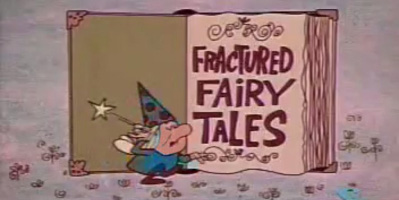 The Declaration of Independence declared in 1776 from now on people are born with the right to life and can pursue happiness. Everyone in that room was born before 1776. So everyone born before 1776 wasn't born with the right to life? That's not what the Bible says. Good thing I was born way after 1900. It further declares I was born with Liberty free from oppressive restrictions imposed by authority on one's way of life, behavior, or political views. Isn't that more about where I was born rather than how I was born? If I was born with this Liberty this protection from false arrest, torture, and political murder then I should be safe wherever I go because I was born this way. Okay. |
 What
is the SUKHI 222 Project?
SUKHI222
is a global project to get a foothold in every country
to insure everyone on earth has a minimum of 2 gallons
of fresh water per person per day. The idea that some
clean water each day is your "Right," why is this so
radical? Why do we even have to make this a declaration?
Maybe it's because humans always took water for granted
and always wasted it. That party is over. Do we forget so quickly in 1776 it was considered the idea that "all mankind are created equal; with the right to life, liberty and the pursuit of happiness" this was considered a radical new concept. Who'ddah thunk. As we look around the world at how difficult it is for democracy and freedom to take hold and flourish, America does seems like a political miracle. How could such bare bones basic things like pursuit of happiness or a clean glass of water be considered so unique, improbable and radical? Is it such a unique and improbable concept in 2023 that every person on earth should have a little bit of fresh water each day? A bed to sleep in and a few calories each day? Radical isn't it. Visit the SUKHl222 Project, just to see what's it's all about. Stop using plastic bags, and don't waste water! See what it's about- SUKHI 222 in 2 Minutes Do the dead outnumber the living? By Wesley Stephenson BBC News
The
population of the planet reached eight billion in October,
according to the United Nations. But what's the figure for
all those who have lived before us? Well I have the Chart Of The Dead. It shows the major moments in all of history where the most number of humans died like the Black Plague. I have to find the Chart. Before I die. I made it like 10 years ago. Scientists say the number of people who have ever lived ever
from the beginning of humans is between 60 and 105 billion.
Thats quite a spread. My question is, in all that time what
was the majority cause of death? Disease, war, incest, murder,
incest along with murder, what. Cleopatra was the last
generation of the Ptolemaic Dynasty, it died out from incest
and family murder. The point is more often than not the cause
of demise was something human related. That says alot. Stay
out of your own way and life will favor you! How do you do
that? It's all right here in |
||||||||||||||
 We're on a rocky road right now, with the young people having a crisis. If you have anxiety don't negate it navigate it. If you have confusion and uncertainty don't fear it steer it. Change is here. Humans suddenly doubled and tripled their life expectancy in little over 100 years. This is too sudden. Too soon. To be thrust into the verification of science and reality. For 231,573 eons humans believed whatever anyone said. We are now in the age of Authentication of verification of Information. Yes society "appears" to be collapsing. It's not. It's just adapting to change and people don't like change. Our cognitive dissonance has to catch up. In the meantime some clever stooge could feed us a bullshit version of our past and take control of our future. Are we ducks in a barrel? Engineer Data Professor John Boik explains what we should do about our disconnect- The Systems Approach To Planet Earth
|
|||||||||||||||
|
What if you just visit the website does that count as Fitness? Take one idea from each
website and you're good as gold.
Fitness Websites ------------------------------------------------------------------------------------------
Entering
Ye Olde Village Training Centre Digitale
............................................................................................ CHICAGO: Studio Run And Gun circa 1992 It was the 1990's the world was changing. Who knew. Now what . . . a documentary about Run And Gun and the
1990's? What
is Duelin' Firemen?
You have never seen anything like this before. Buckle up and check it out. Play
Grady Sain's Banjo Gyro right now click here quickly!
HERE WE HAVE BILL BURR ON CONAN EXPLAINING HOW THINGS WORK. JUST WATCH THIS- 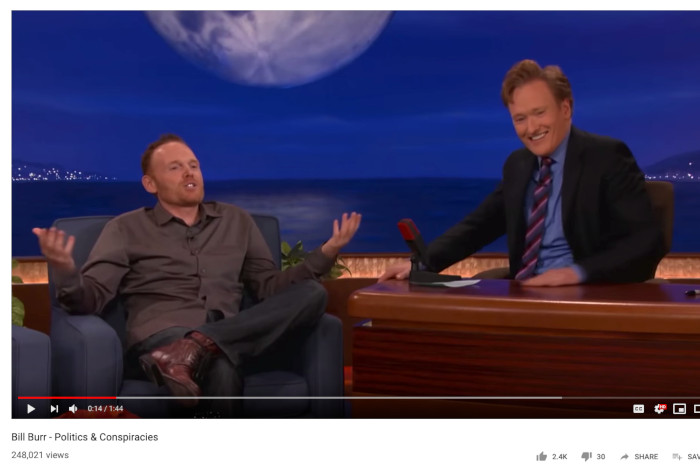 Bill Burr is over the top. Here another clip BILL BURR Ranting on about CRAZY LIBERALS, CONSERVATIVES AND SOCIALISM |
|||||||||||||||
|
R.
Crumb Artwork and Museum |
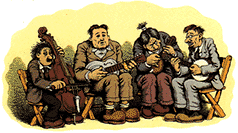 |
| "I
feel that my work is but a feeble expression of something that
in itself is vague and doubtful...Sometimes when I probe
myself I find that my intentions in art aren't as sincere as
they should be...I realize that I'm fairly good at drawing,
but you see that's only because I've done so much of it, and
it seems sometimes that the only reason I have stuck at it so
diligently is because I have to sort of get even with society
for not accepting me...Subconsciously I want to make myself
immortal among men, leave my mark on the earth to compensate
for social inadequacy...So I draw...If I got rid of my
greatness complex. I probably would lose my desire to draw. It
seems to me that a true artist is a man who is passionately in
love with line, form, color or some aspect of life... While
these things appeal to me, I don't find any real burning
passion for them within myself...The only burning passion I'm
sure I have is the passion for sex... - R. Crumb, Sept. 29, 1961. 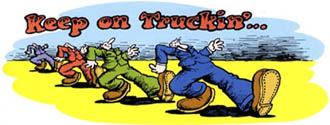
|
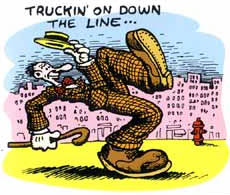 "The trouble with the rat race is that even if you win, you are still a rat." -- Lily Tomlin |
| THE TUBES are a pioneering San Francisco
Art Rock band. The TUBES PROJECT website has been abandoned
and taken over by Spammers, do not visit that one visit this
one The TUBES YOUTUBE TV channel The Tubes Project The Tubes.com is also good. The Tubes Rock The World! The Tubes Live "Maratonrock" is from Germany and recorded in Sweden 1983. The concerts took place in Westfalen Halle in Dortmund west Germany 14/5-83 and were introduced in swedish TV 30/7-83. The order of bands: Nena, Men at Work, The Tubes, Ultravox, Little River Band, Robert Palmer and B-52's It was more maratonrock 1983 in swedish TV: 29/1-83 and 16/4-83. Classic Tubes, here is good photos of the Classic Tubes in days of yore! Reverend Billy C Werts is now on WMNF Radio. See his show in Schedules Link www.WMNF.org Bebop Deluxe - Bill Nelson billnelson.com Allan Watts on psychedelic drug use, "When you get the message, hang up the phone." HISTORY OF PROMOTION COMPANY
"CELEBRATION CONCERTS" By the 1970s, he formed Celebration Concerts, a concert-promotion company whose clients included the Super Bowl of Rock series at Chicago's Soldier Field stadium featuring Emerson Lake and Palmer, Pink Floyd, Ted Nugent and Peter Frampton. "Celebration-Flipside" promoted many top acts of the 70's. Crazy Frank worked there and he had no drivers Liciense, so the deal was, give him a ride to the Show and you get backstage Passes! Crazy Frank RIP |
|
| Chicago
underground TV and radio history The Magic Door - a Jewish Kid Show in Chicago area and suburbs The Magic Door was a Jewish educational TV series aimed at providing kiruv (outreach) to Jewish children in the Chicago, Illinois metropolitan area. The show was produced by the Jewish Federation of Chicago; and premiered January 1, 1962. The show ran weekly until January 1, 1982 that aired at 7:00 AM every Sunday morning on WBBM-TV. The main characters of the series included "Tiny Tov" (a character "reduced" to appear as a kind of elf), and two hand puppets named "Scrunch" and "Judy". Tiny lived in a house that was made out of an acorn, the entrance was "The Magic Door". Each week, Tiny Tov would travel back through time riding his Magic Feather. Each week he would educate Jewish children on Jewish history, sharing stories from Torah. A-room zoom zoom A-room zoom zoom Gily gily gily gily gily A-sa, sah. Come through the Magic Door with me Just say these words and wondrous things you'll see! WGN TV channel 9 shows- Creature Features Horror Movies -------------- Historic Chicago Television WGN TV BOZO CIRCUS RAY RAYNER and FRIENDS, FAMILY CLASSICS with FRAZIER THOMAS and GARFIELD GOOSE ------------------- WNUR Northwestern University "Antidote Radio" - 1980's Highland Park, Illinois JBTV Music Video This Show is and always was about MUSIC. NO corruption, no corporate PlayList, no payola. The record companies used to bring all the artists to JBTV that MTV wouldn't play. Yes MTV used to actually play Music Videos! Long time ago. The first half of the 90's MTV was dying but it wasn't dead yet. They had a very tight VooDoo formulae to get things on the playlist. JBTV benefited off this and had some excellent Music Videos in the period I worked there from 1990 - 1995. By the end O the 90s I would say MTV was all was completely brain dead. It's playlist excluded 90 percent of the Music videos out there. Because of that many people have mistakenly gone so far as to say that Music Video is a limited artistic medium, even claiming it's ruined the music business. The corrupted playlist of MTV has always been cited as proof. The fact is the music business was dooming itself just fine without including the folly of MTV's narrow corporate playlist. Contrary to what a lot of people say including some musicians themselves "Music Video" is not a limiting medium. It can be! That doesn't mean it IS. FRANK ZAPPA ON POLITICS FRANK ZAPPA ON POLITICS What does it mean when people say they don’t believe in science? Or they do but they say that science is always changing? As the great Voltaire once said, “If you wish to converse, define your terms.” Is it science the verb or science the noun? The verb means an approach to knowledge, to philosophy as methods for developing an understanding of reality. The noun means some sort of truth “proven.” In other words science is a map and science is a destination. That’s two different things.
A good algorithm can provide both. Some ambiguity, complexity, statistics and details of scientific evidence as well as in combination with -confident narratives and heartwarming testimonials (that contain far less real evidentiary value).
The latter without the former gives faith-based explanations a significant public relations advantage over science and skepticism. But the fact remains that truth is messy and full of uncertainty, and if someone is selling telling you something as extremely simple, clear-cut, and too good to be true, they probably are selling you a hope or a fantasy, not a reality. Nothing wrong with hope! Just don’t bet the Farm on it.
We were just talking about Pet products that will kill your dog and cat. Flea Collars! Don’t use them, it’s a scam, and can be dangerous. For good info look at this "Science Based Pet Health" website. Not just Pets it has a great explanation / definition of science in general. It says science means anything and everything can and does change. But that's not how we live our life. We live life with propositions that achieve a level of supporting evidence that makes any serious doubt about their truth perverse and irrational.
Wow
that’s just very profound. All your nutty friends that have
a problem believing in science send them here to this page -
The Skeptvet - What Does Scientifically Proven Really Mean
|
Bogart 9 Presents the Matt
O'Neil Wheaton Central Denver Art Exhibit The Clash 1980 album
Sandinista .......
Bungle in the Jungle......
|
History
of radio station WXRT Chicago
DJs
from THE
FOX radio station go to WXRT.
WJKL was "The Fox" radio station in
Elgin Illinois. "The FOX radio"..
Fox River Valley. Hardly a Valley,
more like a steep driveway. Chicago's WXRT's Tom Marker
landed a job at WJKL where he worked from 1975 to 1980.
Soon after Norm Winer became ‘XRT’s program director in
1979. Tom Marker was one of his first hires. CHICAGO
AM RADIO. On May 2, 1960, WLS transformed into a top 40
radio station for the first time under the programming
of Sam Holman. Early jocks of this emerging format at
WLS were Clark Weber, Bob Hale, Gene Taylor, Mort
Crowley, Jim Dunbar, Dick Biondi, Bernie Allen and Dex
Card. Two WLS jocks, Ron Riley and Art Roberts each
interviewed the Beatles. Clark Weber became morning host
in 1963, two years after joining the station. He was
Program Director from 1966 until 1968 when John Rook
arrived. Weber then moved to WCFL for a few years and
then did a series of other Chicago radio gigs for many
years. WLS-AM's
flip to talk radio in 1989 was a symptom of the fact
that by the eighties, music fans had moved to FM. Other
AM talk stations at the time included WLUP (1000), WVON
(1450) and WJJD (1160). WIND (560) had also done talk
before being sold and going Spanish. It's interesting to
note that even though music fans primarily moved to FM
in the eighties, the top station in town at the end of
the decade was adult contemporary station WGN-AM (720),
owned by Tribune. WBBM-AM (780) also soared to the top
three by the late eighties as a news station. Although
its sister FM, B96, was the leader in contemporary hits,
WGCI (107.5) and WVAZ (102.7) ranked higher in the
ratings with their urban formats. Evergreen's WLUP
(97.9) also did well as a rock station. Then it sold to
Bonneville, in which it failed as an adult contemporary
station but returned to rock in July 1997.
|
Special Effects studio "Boss
Films"
The
Casablanca classic restoration and transfer onto DVD of
this film is superb and it brings an essentially great
drama right up to date on a technical level. Holy Cow remember these
Cards? I used to Live for these WXRT Featured Artist cards.
I remember getting them often at Flipside records
on Finley Road in Lombard. Flipside had the the three
Genesis records "Foxtrot, Nursery Cryme and Tresspass" for
$3.95 each. That was the going rate for albums in the
1970's.
|
|
THESE
Alligators are friends of the Family They live at Billie's
Swamp Safari Camp. They are employed as Enertainers..
INTERVIEW WITH CHICAGO RADIO STATION WLUP PROGRAM MANAGER JOHN GEHRON ABOUT STEVE AND GARRY (Steve Dahl and Garry Meyer)
Rick: Those WLS years were a turbulent time, despite the great success. The early to mid-80s Steve & Garry must have been a challenge for you. They were calling you “Scumby” on the air, reading your memos, writing songs about you. How do you look back on that time now?
John Gehron: I think we both were learning something from each other at the time. They were really pushing the limits, pushing the envelope. Really, they invented reality radio as we know it today. Meanwhile, I was working for a very conservative company that didn’t quite understand what they were doing, so we had a split in the building. (Photo: John at his WLS desk) There was one group that still believed in the old way of doing things, and one group that embraced this new way of thinking. It came to a head in the end when I wasn’t allowed to rehire them.
Rick: Just speaking as a listener in those days, I think part of the appeal of that show at that time was hearing someone rip their boss like that. It’s unfortunate that it was you, especially now that I know how highly everyone else thinks of you, but honestly, all of us wished that we could talk to our bosses the way those guys talked to you. There was something immensely cathartic about it. I remember one time tuning in and Steve was reading a memo that started with this sentence: “DO NOT READ THIS MEMO ON THE AIR.” That was jaw-dropping.
John Gehron: Oh no question, from a listener point of view it was clearly great radio. There’s no doubt that some of that was for show, but very much of it was real. That was what their show was about. Reality. They were really hard on us, but they were also really hard on themselves when they didn’t feel they were living up to their own ideals.
Rick: Do you still have a good relationship with those guys?
John Gehron: I would say so. I think I have a good relationship with both of them. I see Garry pretty often, and I really should get in touch with Steve. We both have a lot more time on our hands these days.
Rick: You’ve worked with virtually all of the major air talent in Chicago over the past 30 years. Tell us a few things that may surprise us about what these guys (and gals) are really like to deal with off the air.
John Gehron: I always found the big stars had an intensity about them, and part of my job was getting out of their way. The good ones knew what they wanted to do, and the great ones had a vision, and I had to give them the freedom to realize it. I have a tremendous amount of respect for talent—for their creativity. I know how hard it is to do what they do, to walk in and create something like that, because I can’t do it.
Rick: Do you think most program directors think that way?
John Gehron: The good ones do. Some programmers enjoy the idea of hearing their format executed exactly the way they envision it or draw it up. I never felt that way. If I could have executed it perfectly, I would have done it myself. ------------------------------------------------------------------------------------------------
Founded by musician Rocky Jones, DJ International records was the right label in the right place at the right time. Chicago in 1985 was a city which was moving to its own particular beat and that beat was House Music. The key movers and shakers in the clubs were Frankie Knuckles at The Warehouse and Ron Hardy at the Music Box, who were responsible for influencing a whole new generation of Chicago-based artists who were experimenting with the unique rhythms they were hearing at these two Chicago clubs. Before long a steady stream of new artists began to emerge from Chicago club land and inevitably they beat a path to the hottest new label with the coolest name in town, DJ International. The list is like a who's-who of House Music and includes Steve "Silk" Hurley, Chip E, Fingers Inc, Tyree, Farley "Jackmaster" Funk, Kenny "Jammin" Jason, Bam Bam, Sterling Void, Joe Smooth, Adonis, Fast Eddie and veteran Frankie Knuckles amongst many other names like "Nick The White Knight"one of the first white boy rappers. The
impact which DJ International had upon the spread
of House Music internationally cannot be
understated. They scored a No.1 UK Pop hit with
Steve "Silk" Hurley's "Jack Your Body? and a top
10 UK smash with Farley "Jackmaster" Funk's "Love
Can't Turn Around" as well as being the first
label to take their artists to the UK and Europe
thus putting House Music on the global map. Following
over 200 releases across no less than 4 different labels
within the group, DJ International ruled the early era of
House and it's legacy survives to this day with virtually all
of the releases now commanding huge prices on the 12"
collectors circuit and it's ideas being routinely sampled and
copied by today's new producers and artists. DJ International
has always remained privately owned by Rocky Jones and he is
proud to announce that the label will be promoting it's first
new record on DJ International since the early 1990's. |
The Planet Has Links
------------------------------------------ WELCOMEN
PRINCE DECLARES THE INTERNET IS OVER |
| Half Man Half Biscuit are an English
rock band, formed in 1984 in Birkenhead, Merseyside. Known for
their satirical, sardonic, and sometimes surreal songs, the band
comprises lead singer and guitarist Nigel Blackwell, bassist and
singer Neil Crossley, drummer Carl Henry, and guitarist Karl
Benson. Half Man Half Biscuit were formed by two friends from Birkenhead, Neil Crossley and singer, guitarist and songwriter Nigel Blackwell who was (in his own words) at the time "still robbing cars and playing football like normal people do". In 1979, Blackwell was editing a football fanzine (Left For Wakeley Gage); he met Crossley when he went to see the latter's band play. In 1984, when Half Man Half Biscuit were formed, Crossley moved to bass and the two were joined by Nigel's brother Simon Blackwell (lead guitar) and his friend Paul Wright (drums), both previously with a group called Attempted Moustache. The quartet started to rehearse in the Liverpool-based Vulcan Studios, where they soon turned a five-piece, with David Lloyd now on keyboards. Their debut album, 1985's Back in the DHSS, topped the UK Indie Chart and reached number 60 in the UK Album Chart. Its title was a play on The Beatles' "Back in the U.S.S.R." and also a reference to the DHSS, the government department that dealt with the unemployed, Nigel Blackwell having been on unemployment benefits since 1979. The band's first single, "The Trumpton Riots", topped the British independent chart in 1986, and they went on to perform at Glastonbury Festival. The second single, "Dickie Davies Eyes", also topped the indie chart. In late 1986, the band split up, giving as reason "musical similarities". They followed with album Back Again in the DHSS, containing previously issued, unreleased and live tracks. The band reformed in 1990, with a performance at the Reading Festival following, and a new single, "Let's Not" issued before the year was out, followed in 1991 by a collaboration with Margi Clarke on a version of Edith Piaf's "No Regrets". The third album was McIntyre, Treadmore And Davitt, released in October 1991. By the time This Leaden Pall was released in 1993, Wright and Lloyd had left the band, with Carl Alty joining on drums. Simon Blackwell left the following year, with Ian S Jackson joining. Jackson (who later joined Rooney) and Alty (who joined Joyrider) departed in 1996, to be replaced by Ken Hancock (guitar) and Carl Henry (drums). Since reforming, the band have produced an album every two or three years. Half Man Half Biscuit were championed by DJ John Peel, for whom they recorded twelve sessions, and it was on his programme in 1990 that the band announced their return. Half Man Half Biscuit turned down the chance to appear on The Tube, as Tranmere Rovers were playing that night, even though Channel Four offered to fly them by helicopter to the game. Blackwell has been a fan of the team since "sometime after the Coventry City cup win in 1968". The band's styles parody popular genres, while their lyrics allude to UK popular culture and geography. Blackwell often refers to Wirral and to North Wales, often in the context of hillwalking in Snowdonia; he also appears fond of Shropshire, East Anglia, The West Country, and Oxfordshire. British or international football, Sylvia Plath, Thomas Hardy, and the Bible are referenced in his lyrics. As the 1990s progressed, Blackwell's love of blues and folk became more apparent. Bassist Crossley's tastes include late 1970s and early 1980s new wave or post-punk bands, and during live sets HMHB have performed covers of acts as diverse as Joy Division, Magazine, Tim Buckley, The Beach Boys, Tommy James and the Shondells and Ike and Tina Turner. In 2001, Blackwell provided the voiceover for a BP television advert. In April 2010, the band's song "Joy Division Oven Gloves" from their 2005 album Achtung Bono was the subject of a Facebook campaign to get it to No. 6 on the chart for 12 April 2010, in response to the rumoured closure of the indie-supporting radio station BBC 6 Music. The song reached No. 56 on 11 April 2010: this was their first UK Singles Chart appearance. It also reached No. 3 in the Official Independent Singles chart the same week, and was No. 1 in the HMV UK Digital Downloads Top 40 Tracks on 16 April, knocking Ultravox's song "Vienna" off the top spot – itself part of a separate Facebook campaign the previous week. Victoria Loop has played live several times with the band on tenor horn, cornet and bass guitar. She is affectionately known as 'The 5th Biscuit'. Ken Hancock played his last gig with the band in summer 2017, and was replaced at the end of the year by Karl Benson. |
Check to see if your Family
members emails are on any of those Lists of names from data
breaches Target, Home Depot, Yahoo, etc. HAVE I BEEN PWNED? (Pawned spelled without the A) is a service that collects hundreds of database dumps containing information about billions of leaked and stolen accounts. Users can search for their own information to see if your email address appears then you know not to use any parts of that Password ever again. The site has been widely touted as a valuable resource for Internet users wishing to protect their own security and privacy. "Have I Been Pwned?" was created by security expert Troy Hunt on 4 December 2013. I Been Pawned https://haveibeenpwned.com Here is the CFPB (Consumer Financial Protection Bureau), a U.S. government agency that makes sure banks, lenders, and other financial companies treat you fairly. Definitely bookmark the CFPB page~ 855-411-2372 https://www.consumerfinance.gov/consumer-tools/
|
|
Dean
Lyon's Computer Graphic's History |
| After graduating from the University of Wisconsin–Madison in
1971 with a degree in meteorology, Terry Kelly took a job with
Madison, Wisconsin, television station Channel 27 calculating
weather predictions. Over the next two years he introduced a
number of new techniques to the industry, including using
magnets to represent high and low points, color markers on a
whiteboard for graphics, and later hand-photographing satellite
cloud imagery with a Bolex camera to produce the first
cloud-movement animations. Kelly and several of his colleagues also produced weather forecasting software. In 1974 he was promoted to chief meteorologist at Channel 27, and at the same time started Weather Central to sell and operate their software for smaller organizations such as ski resorts and local highway departments. ........................................................................................................................................................ . |
|
ColorGraphics was formed in 1979 as a partnership between
Terry Kelly and Richard Daly. Kelly and Daly had both worked
in theUniversity of Wisconsin's Space Science and Engineering
department, developers of the McIDAS weather display system.
McIDAS used downloaded satellite cloud cover images and
superimposed them on locally generated maps. Designed for the
National Weather Service, McIDAS was a high-end system well
beyond the budget of a television station. |
|
1975 |
| Altair 8800 computer |
| Winged edge polyhedra representation |
| Bill Gates starts Microsoft |
| JPL Graphics Lab developed |
| Anima animation system developed at CGRG at Ohio State |
|
1976 |
| Jim Blinn develops reflectance and environment mapping |
| Ukrainian Pysanka Egg erected in Vegraville, Canada by Ron Resch to commemorate the RCMP |
| Steve Jobs and Steve Wozniak start Apple computer. |
|
1977 |
| Apple Computer incorporated |
| Apple II released |
| Computer Graphics World begins publication |
| Academy of Motion Pictures Arts and Sciences introduces Visual Effects category for Oscars |
| Larry Cuba produces Death Star simulation for Star Wars using Grass at UICC developed by Tom DeFanti at Ohio State |
|
1978 |
| Leroy Nieman uses Ampex paint system to draw football players in Super Bowl XII |
| James Blinn produces the first of a series of animations titled The Mechanical Universe |
| Bump mapping introduced |
|
1979 |
| National Computer Graphics Association organized |
| IBM 3279 color terminal |
| Atari 8-bit computers introduced |
| Disney produces The Black Hole using CGI for the opening |
|
1980 |
| Apollo Computer founded |
| Turner Whitted of Bell Labs publishes ray tracing paper |
| First NCGA conference - Arlington, Virginia - Steven Levine, President |
| IBM licenses DOS from Microsoft |
| Aurora Systems founded by Richard Shoup |
| Disney uses computer graphics for the movie Tron |
| MIT Media Lab founded by Nicholas Negroponte |
| Hanna-Barbera, largest producer of animation in the U.S.,begins implementation of computer automation of animation process |
| Quantel introduces Paintbox |
| Chris Carter produces his first multi-track audio recordings using two cassette decks and a 4-track TEAC reel to reel. |
|
1981 |
| Sony Betacam |
| Tom DeFanti expands GRASS to Bally Z-50 machine |
| IBM introduces the first IBM PC |
| Penguin Software (now Polarware) introduces the Complete Graphics System |
| Looker includes the virtual human character Cindy |
|
1982 |
| The Last Starfighter |
| Skeleton Animation System developed at CGRG at Ohio State |
| ACM begins publication of TOG |
| Tom Brighham develops morphing |
| Adobe founded by John Warnock |
| Atari develops the data glove. |
| AutoDesk founded; AutoCAD released |
|
1983 |
| ILM computer graphics division develops "Genesis effect" for Star Trek II - The Wrath of Khan |
| Autodesk introduces AutoCAD the first PC-based CAD software |
| Chris Carter takes one of the first AutoCAD classes. At Joliet Junior College. |
|
1984 |
| Robert Able & Associates produces the 1st computer generated 30 second commercial used for Super Bowl |
| Wavefront Technologies is the first commercially available 3D software package |
| 14.5 minute computer generated IMAX film shown at SIGGRAPH 84 |
| Universal Studios opens CG department |
| First Macintosh computer is sold; introduced with Clio award winning commercial 1984 during Super Bowl |
| Lucasfilms introduces motion blur effects |
| Chris Carter takes one of the first Adobe Illustrator 88 classes at College of DuPage, Glen Ellyn, IL |
|
1985 |
| Pixar Image Computer goes to market |
|
1986 |
| Young Sherlock Holmes stained glass knight |
| 2010 The Movie |
| The Great Mouse Detective was the first animated film to be aided by CG. |
| Pixar purchased from Lucasfilm by Steve Jobs |
| Microsoft goes public |
| Apple IIgs introduced |
| Luxo Jr. nominated for Oscar |
|
1987 |
| GIF format |
| Willow popularizes morphing |
| VGA invented by IBM |
|
1988 |
| PICT format |
| Apple sues Microsoft for copyright infringement for GUI |
| U.S. Patent awarded to Pixar for RenderMan |
| Who Framed Roger Rabbit mixes live action and animation |
| Disney and Pixar develop CAPS |
| PIXAR wins Academy award for Tin Toy |
|
1989 |
| Bill Wildt of MotorSports UNLTD. introduces Chris Carter to Jerry Bryant of JBTV |
| PIXAR starts marketing RenderMan |
|
1990 |
| Joe Kelley puts SuperSpots into Bankruptcy proceedings. Jerry, Mike, David buy the assets. |
| Microsoft ships Windows 3.0 |
| U.S. Patent awarded to Pixar for point sampling |
| 3D Studio |
|
1991 |
| World Wide Web |
| Disney and PIXAR agree to create 3 films, including the first computer animated full-length film Toy Story |
| ILM produces Terminator 2 |
| JPEG/MPEG |
| Jerry Bryant, Dave Gariano and Mike Harnett takeover SuperSpots assets and hire Chris Carter |
|
1992 |
| Disney and Pixar get Academy Technical Achievement Award for CAPS production system |
| QuickTime introduced |
| University of Illinois debuts CAVE virtual reality technology at SIGGRAPH 92 |
| Lawnmower Man |
| VIFX uses flock animation with Prism software to create large groups of animals |
|
1993 |
| disk array and compression codecs allow for nonlinear editing and full motion video |
| Jurassic Park |
| Babylon 5 uses Amiga and Macintosh generated CGI |
| Myst released |
|
1994 |
| SGI and Nintendo team up for Nintendo 64 product |
| Microsoft acquires Softimage - announces Windows 95 |
| Doom hits game market |
| Reboot (CG cartoon) uses 3D characters |
| Facetracker used by SimmGraphics to animate facial expressions for Super Mario |
|
1995 |
| Toy Story |
| DreamWorks SKG founded |
| Pixar goes public with 6.9M share offering |
| Sony Playstation introduced |
|
1996 |
| Quake hits game market |
| Windows 95 ships |
|
1997 |
| DVD technology unveiled |
| Jim Kajiya of Cal Tech gets Academy Award for development and application of CGI hair and fur |
| Dean Lyon is about to get Chris Carter a job at Richard Edlund's Boss Films, Hollywood CA. Then Boss Film closes its doors! Dean and Chris are now both out of a job. |
|
1998 |
| Titanic becomes the largest grossing motion picture in US history |
| MPEG-4 standard announced |
| Geri's Game - awarded the Academy Award for Animated Short |
| Pixar awarded a Scientific and Technical Academy Award for the development of software that produces images used in motion pictures from 3D computer descriptions of shape and appearance |
|
1999 |
| Star wars Episode One |
| Toy Story 2 produced by Pixar |
| Fantasia 2000 produced by Disney |
| Disney's DreamQuest and Feature Animation join to form The Secret Lab |
|
2000 |
| Playstation 2 |
| Microsoft X-Box prototype shown at SIGGRAPH 2000 |
| Dinosaur produced by Disney |
|
2001 |
| Windows XP |
| movies - Final Fantasy , Monsters Inc, Harry Potter, A.I., Lord of the Rings, Shrek, Jurassic Park III |
| Microsoft xBox and Nintendo Gamecube released |
|
2007
|
| Bogart 9 installs the Adobe Master Collection HD CS3 Production Pro Suite |
|
2008
|
| Dean Lyon starts working at DaVinci HQ |
|
Dean
Lyon's History of Computing and VRE Timeline
1450 Gutenburg press |
|
||
|
Profile: Arthur Lyman The Mood Merchant of Exotic Music casts
his Spell Again in Waikiki A conch shell honks, bamboo sticks rattle, a jungle bird cries out. It's
1958 all over again: Arthur Lyman is making the music that
made him oh so famous and rich so very long ago. "Isn't it beautiful," he says, "that's why I like to play here." Here is the open air bar of the New Otani Kaimana Beach hotel on Waikiki's quiet side. He plays private parties and regular gigs in Waikiki for $100- a-night, a bargain for the exotic music maker man who once commanded thousands. "I never thought my music was exotic," he laughs. "It was natural to me-the crash of the waves, the rustle of the palm trees, the birds." Over vodka in the afternoon he reminisces about the glory days. "It was rough," he said, "three months on the road, back here, three months on the road." He ran though four piano players, four bass players and three wives. Got married once on Valentine's Day in Las Vegas after appearing with Harry Belafonte. His bride, a nightclub camera girl, became his manager. "She was a good manager," he said "but we had problems when she started to tell me what to play." Alone now, a survivor of 11 banner years on the road, he's back in Hawaii and happy, neither broke nor rich. "Wives," he said, "they got all my money. I never smelled it." On a toy piano he plunked out "You Are My Sunshine" when he was only five. "My father said, 'You're going to be a musician and he made me practice, practice, practice. He was blind and he would kick me in the butt when I hit a wrong note." At 8, Lyman made his public debut on the "Listerine Amateur Hour" on Honolulu radio station KGMB (now K-59), playing "Twelfth Street Rag." "I won a bottle of Listerine," he laughed. He turned pro at 17, playing in a Kakaako club called Leroy's. "I went to school days and played nights with a group called The Gadabouts. We did George Shearing stuff, cool jazz. I got $45 a week. "When I got out of McKinley High School in '51, I finally told my father, I quit. I went to Halekulani Hotel and worked there as a desk clerk. "That's where I met Martin Denny," he said, "He'd heard I played vibraphone. I was making $280 a month as a hotel clerk. He said, 'You'll be making $109 a week playing for me.' I went back to music. In late 1956, he formed his own band with John Kramer on bass, Allan Soares on piano, Harold Chang on drums and Augie Colon on bird calls. They opened at the Hilton Hawaiian Villages' Shell Bar and might be playing there still except for millionaire golfer France Ii Brown. He invited Lyman and the band to California's Pebble Beach to play for a private party during what was then called the Bing Crosby Pro-am Golf tournament. Some very important people at that party liked what they heard and suddenly Arthur Lyman had a big-time Mainland gig. "We played Vegas the next week," he said. "And then New York, Chicago, San Francisco, Tokyo and..." In 1962, the year he turned 30, he earned $120,000, same as Willie Mays, big money in those days. He was headlining Chicago's Edgewater Beach Hotel, playing two sets a night, six nights a week. That same year he produced six albums in 45 days. Five years later, exotic was old hat, the Beatles were hot, and Arthur Lyman was out of a job. The band broke up in Vegas in 1968-the year Janis Joplin appeared on Newsweek's cover-and they all came home to early retirement in Hawaii. In his meteoric 12 year career, Arthur Lyman and his band produced 33 albums, won three gold records, and recorded 396 songs that even today conjure up dreamy island images of tropical escape. "We always tried to do that," Lyman said, "to get people to come here so we wouldn't have to go there but, funny thing, we were never as popular here in the Islands as we were on the mainland." He's up for a mainland tour, he said, but until that happens you can only see Arthur Lyman on the beach in Waikiki. Arthur LymanBorn 2 February 1932, Kauai, Hawaii Lyman's family moved to Honolulu after his father was blinded in an accident. Arthur began playing with a toy marimba and from playing along with records, was able to reproduce Lionel Hampton solos note for note. His performing career began early, when he won a talent contest on Honolulu radio station KGMB. By the time he graduated from high school, he was playing professionally with a small combo called "The Gadabouts," imitating the piano/vibes sound of George Shearing and Cal Tjader. In 1951, he was hired to play in the bar at the Halekulani Hotel, where Martin Denny met him in the early 1950s. Denny hired him, and the two remained together for the next five years.Denny's breakthrough success with his cover of "Quiet Village" paved a path for Lyman as well. Shipbuilding magnate and Hawaiian developer Henry J. Kaiser (of Kaiser Aluminum and Liberty Ship fame) hired him to replace Denny in his Honolulu nightclub. Soon after, Hi Fi Records in Los Angeles capitalized on Liberty's success with Denny and hired Lyman as their featured artist.Even though the two men were competitors on vinyl, they remained close friends until the end. "He had a keen ear for music and a great imagination," Denny once remarked,"and I would say that his success and exposure paralleled mine. There were debates on who came first, but as far as I'm concerned we did it together." After both had ceased to record, Denny and Lyman often appeared together at performances on Oahu. And when Lyman entered a hospice as he entered the last stages of his fight with throat cancer, "Martin would take Arthur out in the sunshine and give a private show," according to a family friend.Lyman's style was softer than Denny's, but he went much further in his use of exotic environmental sounds. The combination of macaw shrieks and gentle vibes was a vein Lyman mined consistently for over 30 albums. Unlike Denny, whose heavy touring schedule often forced his label to use a stand-in pianist on his albums, Lyman recorded almost exclusively in Hawaii. His Hi-Fi albums were usually recorded in Kaiser's Aluminum Dome auditorium in Honolulu, and still stand out for their superb audio qualities.Lyman's combo included John Kramer on bass, guitar, and other stringed instruments, Alan Soares on piano and other keyboards, and Harold Chang on percussion. In between tours, the group played the Shell Bar at the Hawaiian Village Hotel for nearly 10 years, and reunited on a number of occasions thereafter. Hawaiian-born jazz vocalist Ethel Azama also appeared with Lyman in the early 1960s, and her version of "Lullaby of the Leaves" can be heard on the The Leis of Jazz.The group appeared on numerous television variety shows in the 1960s, including "The Red Skelton Show," "The Andy Williams Show," and "The Steve Allen Show." But their best-known TV appearances were their guest spots on "Hawaiian Eye," the Robert Conrad - Connie Stevens private eye show set on Oahu. The show regularly featured the main characters hanging out at a mock-up of the Shell Bar and listening to Lyman playing one of his favorite numbers.Lyman's signature tune was his cover of "Yellow Bird", which spent 10 weeks on Billboard's Top Ten chart in 1961, reaching #4. When his contract with HiFi ended in 1968, Lyman broke up his combo after an appearance in Las Vegas, and headed back for the islands. He was happy to leave the touring life behind: "It was rough," he once said, "three months on the road, back here, three months on the road." He went on to perform at most of Waikiki's best-known clubs, including Don the Beachcomber and the New Otani Kaimana Beach Hotel.A Time magazine article from 1962 describes a typical stateside performance at the height of Lyman's fame:A
conch shell wailed, the conga drums thump-thumped, the
bamboo sticks clattered," the magazine wrote. "The four
men on stage were constantly on the move — clacking
wooden blocks, scratching a corrugated gourd, flailing
away at Chinese gongs, weaving rhythms that were
insistent, sinuous and hypnotic. Occasionally, when the
spirit moved them, they barked like seals or whooped
like cranes. The happy audience at Chicago's Edgewater
Beach Hotel rattled the rafters whooping back.
|
||
|
TRACK LISTING 1. Andy Partridge & Harold Budd “Ceramic
Avenue” --------------------------------------------------------------------------------------- BANDS WEBSITE LIST This list is evolving as bands disappear,
maybe it's
|
|
Percentage
of Usage of Long-Term Care HealthCare 87.9 million: Number of Americans who will be over age 65 by 2050. 6.3 million: Number of Americans over age 85 in 2015. 18.9 million: Number of Americans who will be over age 85 by 2050.
52%: Percentage of people turning age 65 who will need some type of long-term care services in their lifetimes. 8%: Percentage of people ages 65-74 who need long-term care services, 2018. 17%: Percentage of people ages 75-84 who need long-term care services, 2018.
42%: Percentage of people older than age 85 who need long-term care services, 2018. 47%: Estimated percentage of men 65 and older who will need long-term care during their lifetimes. 58%: Estimated percentage of women 65 and older who will need long-term care during their lifetimes. 33%: Percentage of people turning 65 who will need nursing-home care at some point in their lifetimes. 70%: Percentage of people in nursing homes who are women. 80: Average age of admission for women in long-term care settings. 48%: Percentage of people receiving long-term care who need care for less than one year. 19%: Percentage of people receiving long-term care who need care for between one and 1.99 years. 21%: Percentage of people receiving long-term care who need care for between two and 4.99 years. 13%: Percentage of people who will need long-term care for longer than five years. 22%: Percentage of individuals over 65 in the highest income quintile who will have a long-term care need of two years or longer. 31%: Percentage of individuals over 65 in the lowest income quintile who will have a long-term care need of two years or longer.
38%: Percentage of Americans over age 85 who have Alzheimer's dementia. 64%: Percentage of Americans with Alzheimer's dementia who are women. 145%: Percentage increase in the number of people who died from Alzheimer's dementia, 2000-17. -9%: Percentage decrease in the number of people who died from heart disease, 2000-17. 8-10 years: Average life expectancy following an Alzheimer’s diagnosis. 2.8 years: Average length of time between when symptoms begin and when an Alzheimer's dementia diagnosis is made.
$208 billion: Long-term care expenditures in the U.S., 2015. 63%: Estimated percentage of individuals age 65 today who will have no out-of-pocket long-term care costs during their lifetimes. 13%: Estimated percentage of individuals age 65 today who will incur out-of-pocket long-term care costs of between $0.01 and $50,000 during their lifetimes. 11%: Estimated percentage of individuals age 65 today who will incur out-of-pocket long-term care costs of between $50,000 and $150,000 during their lifetimes. 4%:
Estimated percentage of individuals age 65 today who will
incur out-of-pocket long-term care costs of between $150,000
and $250,000 during their lifetimes. 9%: Estimated percentage of individuals age 65 who will incur out-of-pocket long-term care costs of more than $250,000 during their lifetimes.
$19,500: Median annual cost for adult day care (five days/week), 2019. $48,612: Median annual cost for assisted-living facility, 2019. $52,624: Median annual cost for a home health aide (44 hours/week; 52 weeks/year), 2019. 4.55%: Change in annual cost for a home health aide since 2018. $102,200: Median annual nursing-home cost, private room, 2019. 1.82%: Change in annual nursing-home cost since 2018. $161,148: Average annual nursing-home cost, private room, Manhattan, 2019. $58,400: Average annual nursing-home cost, private room, Monroe, Louisiana, 2019. $24.224: Median annual income from all sources for individuals who are 65 or older. $41,125: Median annual income for households headed by people 65 or older. 19%: Percentage of long-term care costs that were paid out of pocket, 2013. 8%: Percentage of long-term care costs that were paid by private insurance, 2013.
15.7 million: The number of caregivers for someone with Alzheimer's or other dementia. $470 billion: The estimated dollar value of long-term care provided by unpaid caregivers, 2013. 69.4: Average age of care recipient. 49.2: Average age of caregiver. 62.3: Average age of spousal caregivers. 34%: Percentage of caregivers who are age 65 or older. >75%: Percentage of caregivers who are female. 33%: Approximate percentage of caregivers to people with Alzheimer's or other dementias who are daughters. 25%: Approximate percentage of caregivers to people with Alzheimer’s or other dementias who are “sandwich generation" caregivers, providing care to children as well as older adults. 33%: Percentage of people providing care to people age 65 or older who describe their own health as fair or poor. 63%: Percentage of dementia caregivers who say their responsibilities have led to working different hours, leaving work unexpectedly, and worrying about finances. 83%: Percentage of care provided to older adults that is delivered by friends or family members. 30%: Percentage of the population aged 65 or older who will rely on family-provided long-term care for two or more years. 34.7: Average number of hours per week worked by unpaid caregivers who have jobs in addition to caregiving. 70%: Percentage of caregivers who suffered work-related difficulties due to their caregiving duties. 44%: Percentage of caregivers who say that their work supervisor is unaware of their caregiving responsibilities. 10%: Estimated percentage of older adults who have suffered from some form of elder abuse. 7%: Estimated percentage of elder-abuse cases that are reported to authorities.
21%: Percentage of long-term care services and supports that were provided through other public sources, 2013. 62%: Percentage of nursing-home residents whose care is provided by Medicaid. 20%: Percentage of Medicaid funding that went to pay long-term care costs in 2016. 38%: Expected increase in Medicaid spending for long-term care between 2016 and 2026. $126,420: Maximum “countable” assets that a healthy spouse can retain for the other spouse to be eligible for long-term care benefits provided by Medicaid, 2019. (Actual amounts vary by state.) $2,000: Maximum “countable” assets allowable for single individuals who are applying for long-term care provided by Medicaid. (New York state has a higher threshold: $15,450.) $3,000: Maximum “countable” assets allowable for married couples who are applying together for long-term care provided by Medicaid. $585,000: Maximum amount of home equity that a healthy spouse can retain, in addition to countable assets, for the other spouse to be eligible for long-term care benefits provided by Medicaid, 2019. (The limit is higher in certain states, such as California.) $3,160.50: Maximum amount of monthly income that a healthy spouse can receive for the other spouse to be eligible for long-term care benefits provided by Medicaid, 2019. (Actual amounts vary by state.) 100: Days of care in a skilled nursing facility ("rehab") covered in full or in part by Medicare following a qualifying hospital stay.
57: Average long-term care policy issue age. 55.1%: Percentage of long-term care policies purchased by women, 2018. 20.8%: Percentage of long-term care policies purchased by single people, 2018. 15%: Percentage of long-term care policies that were sold through workplace, 2018. 95.1%: Percentage of just-issued long-term policies that include home-care benefits that are at least equal to the in-facility benefit. 125: Number of insurers offering stand-alone long-term care policies, 2000. 17: Number of insurers offering stand-alone long-term care policies, 2016. 750,000: Number of individual long-term care insurance policies sold, 2002. 56,288: Number of individual long-term care insurance policies sold, 2018. 13.1%: Percentage drop in number of long-term care policies sold, 2017-18. 228,000: Number of hybrid life/long-term care policies sold to individuals, 2015. 461,000: Number of hybrid life/long-term care policies sold to individuals, 2018. 16%: Percentage of life insurance sales that are hybrid life/long-term care policies, 2017. $1.87 billion: Annual claims on long-term care insurance policies, 2000. $11 billion: Annual claims on long-term care insurance policies, 2017. 64%: Percentage of long-term care claims that were paid to women. $2,169: Average annual premium, all in-force long-term care policies, 2018. 0.5%: Percentage of all businesses offering long-term care insurance to their employees. 52.2%: Percentage of long-term care claims paid to claimants between ages 81 and 90. 22%: Percentage of long-term care applicants ages 50-59 who were declined coverage. 30%: Percentage of long-term care applicants ages 60-69 who were declined coverage. Old obsolete Links for Simon Horwith the Coldfusion guru ColdFusion Resources http://www.cfmsource.com ColdFusion code Fusebox/methodology Project Plans ColdFusion
From the guru of ColdFusion MX Web Application Construction Kit (CFWACK), you'll have to look hard to find a better book for beginners and intermediate CF users, Ben's site is full of resources and information |
